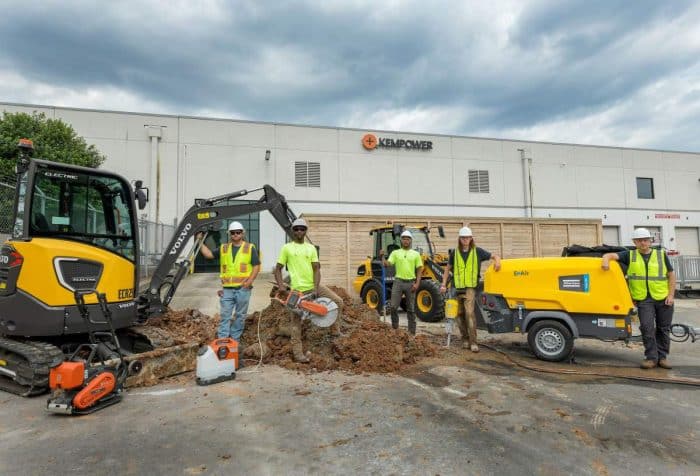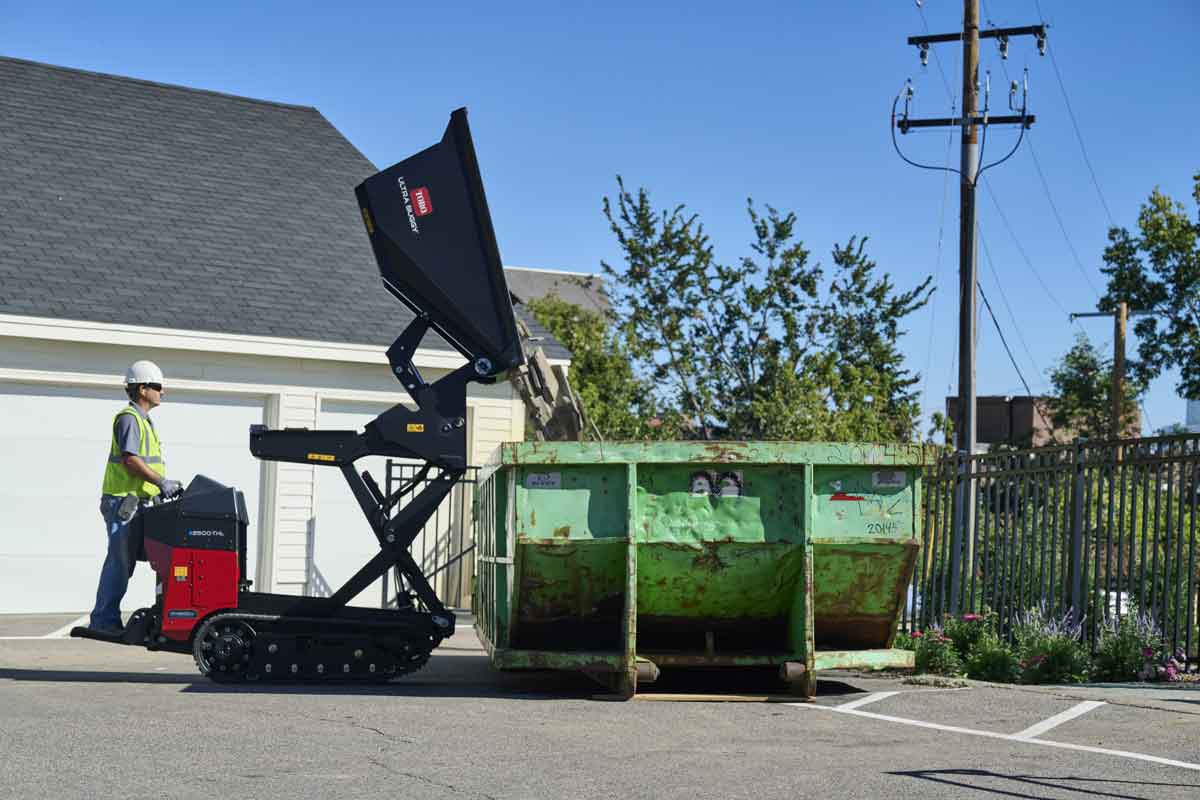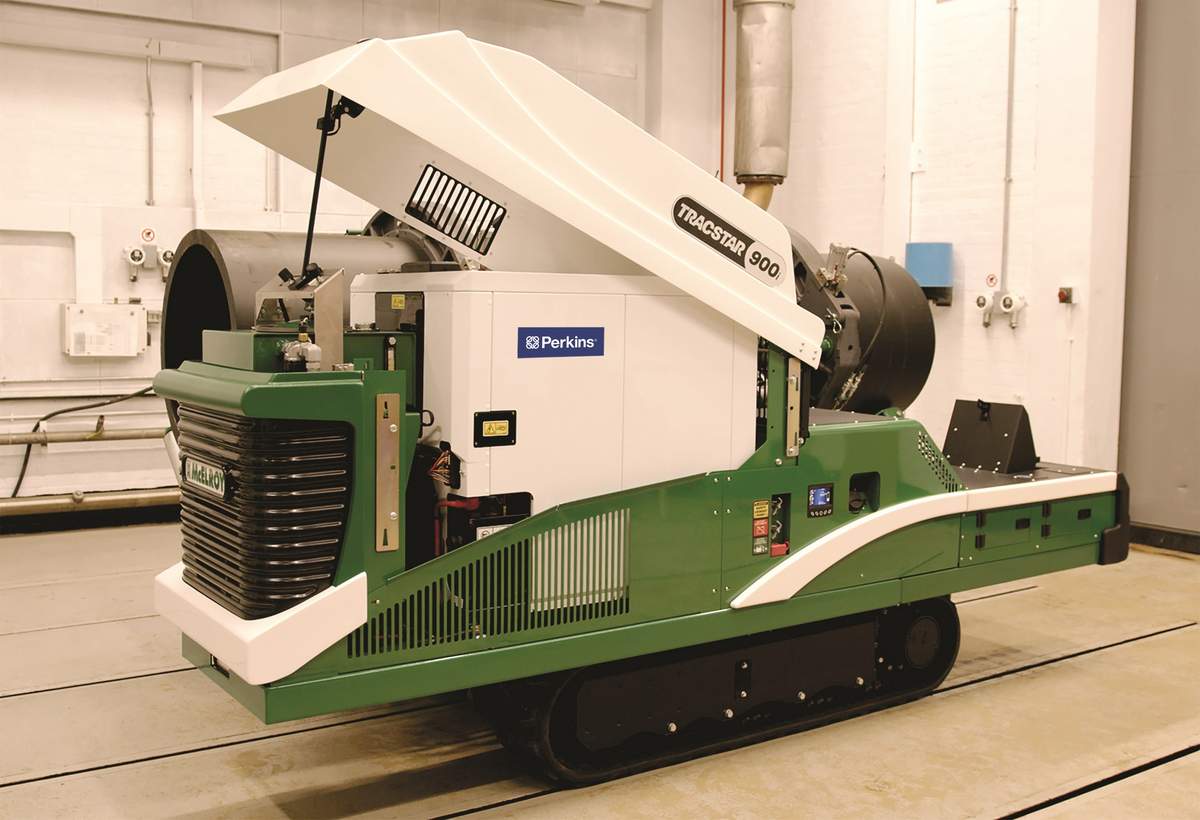WATCH: Video of a Cool Construction Project at Kempower HQ Using Only Electric Equipment
The Sweden-U.S. Green Transition Initiative recently announced a significant milestone. The organization noted one of the first construction projects in the United States using only electric equipment. The project was spearheaded by Kempower Inc., supported by Swedish consortium members Atlas Copco Group, Husqvarna Construction, and Volvo Construction Equipment, along with local subcontractor EV Revolution. An electric vehicle (EV) charging station was installed at Kempower’s new American headquarters in Durham, North Carolina. This was done utilizing only electric construction equipment during the entire project.
Through strong collaboration across the value chain, this installation was completed with reduced climate impact, noise, and emissions. The project proved the feasibility of zero-exhaust emission jobsites. It also highlighted their potential for a positive impact with broader adoption in the United States. The equipment manufacturers provided on-site training and support. They also collected data that was used to document CO₂ reductions and gain valuable feedback from the contractor. This first use case provides a base of learnings that can be scaled for larger projects.
The Carbon Savings of Electric Equipment
As validated by Swedish consultancy Sweco, the small-scale installation of six DC chargers saved 258 kg of CO2 over four weeks. The National Renewable Energy Laboratory projects that by 2030, there will be 33 million EVs on the road. This will require around 28 million charging ports to meet demand. This indicates significant potential CO2 savings from using electric construction equipment for their installation. When multiplied across the entire construction sector, the impact of electric equipment could be substantial.
“The success of this project showcases how leading companies across the value chain can support decarbonization,” said Linda Andrén, Executive Director, Sweden-US Green Transition Initiative. “It underscores the importance of collaboration and the significant impact that scaling these efforts can have on reducing emissions.”
“By working together with construction and rental companies, government officials, and industry associations, we can amplify the impact of our electrification initiatives and pave the way for a more sustainable future for all,” stated Ray Gallant, Vice President, Sustainability and Productivity at Volvo Construction Equipment, North America.
What Experts Are Saying

“The insights we can share from this US use case are valuable for stakeholders at all levels, from policymakers, construction industry clients to project owners and machine operators. When we team up with customers and leading companies in the industry, we can drive change together. And at Husqvarna Construction we’re committed to support the journey,” said Ryan Wesselschmidt, SVP Sales & Services and GM at Husqvarna Construction, North America.
“Atlas Copco was really excited to join this Swedish consortium project,” said Wouter Vlamynck, GM and President of Atlas Copco Power Technique North America. “Together with the other participants, we were able to show that it is no longer about individual sustainable products. Together we are moving towards sustainable construction site solutions.”
“Projects like this are critical in supporting global climate initiatives such as the European Green Deal and the Paris Agreement, which aim to achieve net-zero greenhouse gas emissions by 2050,” said Tomi Ristimäki, CEO of Kempower. “The successful implementation of electric construction equipment in Durham serves as a model for future projects worldwide, demonstrating that sustainable practices can lead to significant environmental benefits. Our commitment to these initiatives is unwavering, and we look forward to furthering our efforts in creating a greener future.”
Let’s See More Projects Like This
This project’s success highlights actionable steps toward reducing emissions in construction. This should help lawmakers, municipal planners and industry leaders to prioritize and adopt these proven technologies.
“By measuring and verifying CO2 in construction equipment we have added another piece of the puzzle to decarbonize the whole value chain — from planning and design to construction and completion” says Anna Kerr, Regional Director Sweco Architects.




